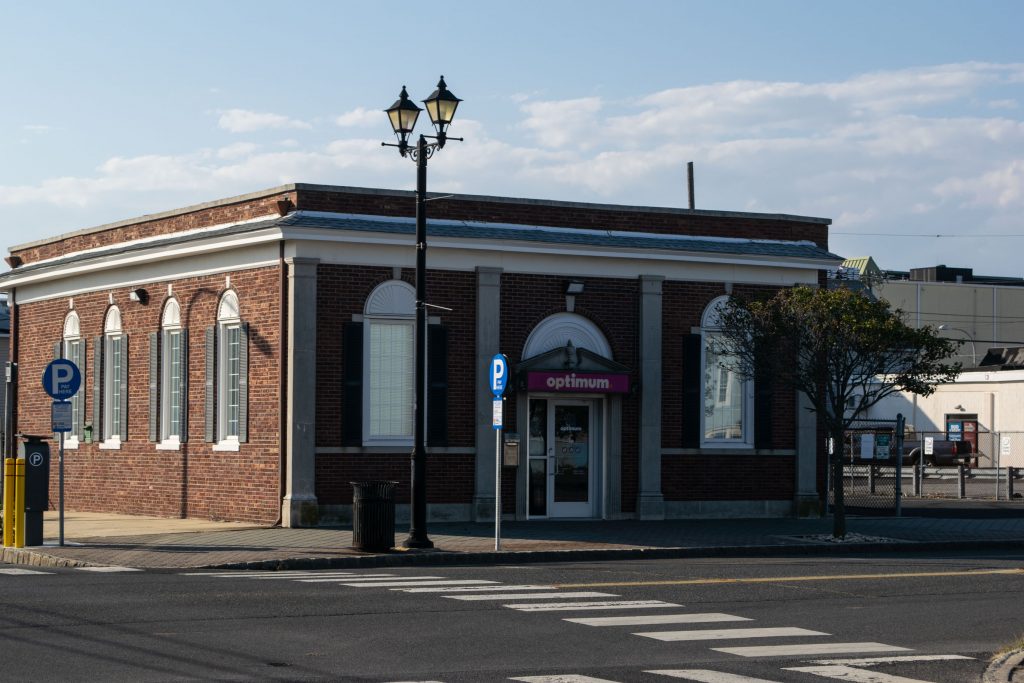The building along the Boulevard in Seaside Heights that long served as a retail office for Cablevision – later rebranded as Optimum – cable television and data services will become a permanent fiber network station that contains a backup generator to keep service running during power outages.
The building, which will be unmanned, had its new use approved by the borough’s planning board Monday night, however the future of the retail portion of the building on the first floor is yet to be determined and remains a major concern for officials.
The application by Cablevision, now owned by Altice USA, had originally come before the board in March, however questions lingered about some of the details as to how the building would operate in its new role. Board members were concerned with safety and aesthetic issues, and questioned whether the now-vacant first floor of the building could be utilized for a purpose that would improve the community rather than sit idle as a vacant structure.
Cablevision has proposed the building to become a fiber node since the company’s facility in Brick Township – despite the fact that it does not offer service in Brick Township – is located near a set of communications towers behind the property of an auto body shop on Mantoloking Road, adjacent to the bridge. While that facility carries data via fiber optic lines to the Seaside Heights office, the data is then transmitted over legacy coaxial cables to individual homes. A node would allow fiber service directly to homes on the barrier island.
Cablevision also proposed the construction of a “mezzanine” that would serve as a platform in the rear of the building to locate a generator that would keep equipment running during power failures.
Under the company’s latest plans, the building would not house any staff and would not serve any retail customers. The first floor would not see any activity at all, and the second floor would be occupied by equipment that would relay fiber cabling directly to homes and businesses instead of the coaxial cabling that currently powers the company’s network. Running fiber optic lines directly to customers is a system largely similar to that of next-generation providers such as Verizon FiOS.
Board members did not approve the plans at the March meeting, citing concerns over the potential for the current building, which occupies a prime location in the central business redevelopment district, becoming functionally abandoned and subject to aesthetic deterioration. Concerns were also raised as to the future use of the site.
At this week’s hearing, Jacob Lewkowski, the engineer on the project, testified that the company would provide increased safety features in the form of bollards that would be set up around the structure in order to prevent damage in the event of an automobile crash. Lewkowski said 12 bollards measuring three feet tall, separated by a five foot gap, would be installed. The bollards are made of stainless steel filled with concrete.
Additionally, Cablevision agreed to provide landscaping around the building and remove about 150 square feet of asphalt from the parking lot to serve as green space. Seven cedar trees would be planted amidst other flowers and bushes.
“It is a hardy species well-suited for this region and provides year-round screening,” Lewkowski said.
The company volunteered to post a performance bond to guarantee the trees would be planted and a maintenance bond to guarantee they would remain living.
Additionally, the generator structure on the mezzanine will be covered in wood panels to improve the aesthetics of the equipment, given its location near a popular intersection along the Boulevard business district.
The nagging question is what will become of the first-foot space that had been used for retail. Board members were unhappy that Cablevision had not provided any ideas for the area, with board member Frank C. Gorman recalling a discussion that resulted in a suggestion that the space could be used for artistic displays or a similar use that would have a community benefit.
The company’s representatives said they would be open to discussions on the matter, but Cablevision’s attorney, Robert B. McBriar, said the application before the planning board did not include potential future uses for the first floor within its scope.
“We could certainly have that discussion of ways to turn that ground floor that’s unmanned into something different,” he said. “But it’s outside the scope of our site plan. It’s a conversation corporate would have to have with you.”
Faced with the task of making a decision on the substance of the application – the generator and mezzanine that would support it – board members unanimously voted in favor of granting permission for Cablevision to do so.
McBriar said Cablevision “understands your concerns” over the lack of occupancy in the building in the business district, and reiterated that they would be open to additional discussions.
The Boulevard store’s retail operations ceased in March. The nearest Optimum store locations to the island are located in either Wall Township or Jackson Township. Optimum provides cable services on Ocean County’s northern barrier island from the Brick-Toms River border in Normandy Beach to South Seaside Park. Areas from Brick Township northward are serviced by Comcast’s “Xfinity” suite of products.

Advertisement

Ortley Beach & North Beaches
Landmark Ortley Beach Breakfast Spot Looks to Expand

Ortley Beach & North Beaches
‘Temporary’ 70-Foot Cell Tower on Route 35 in Ocean Beach OK’d to Return

Seaside Heights & Seaside Park
Beloved South Seaside Park Restaurant Will Remain Open As Developer Seeks to Demolish Block

Seaside Heights & Seaside Park
In Seaside Heights, A $50M Flagship Building Rises Over the Boulevard in a Famed Location

Police, Fire & Courts
Ocean County Sheriff Establishes Drone Command Center in Seaside Heights Amid New Video






